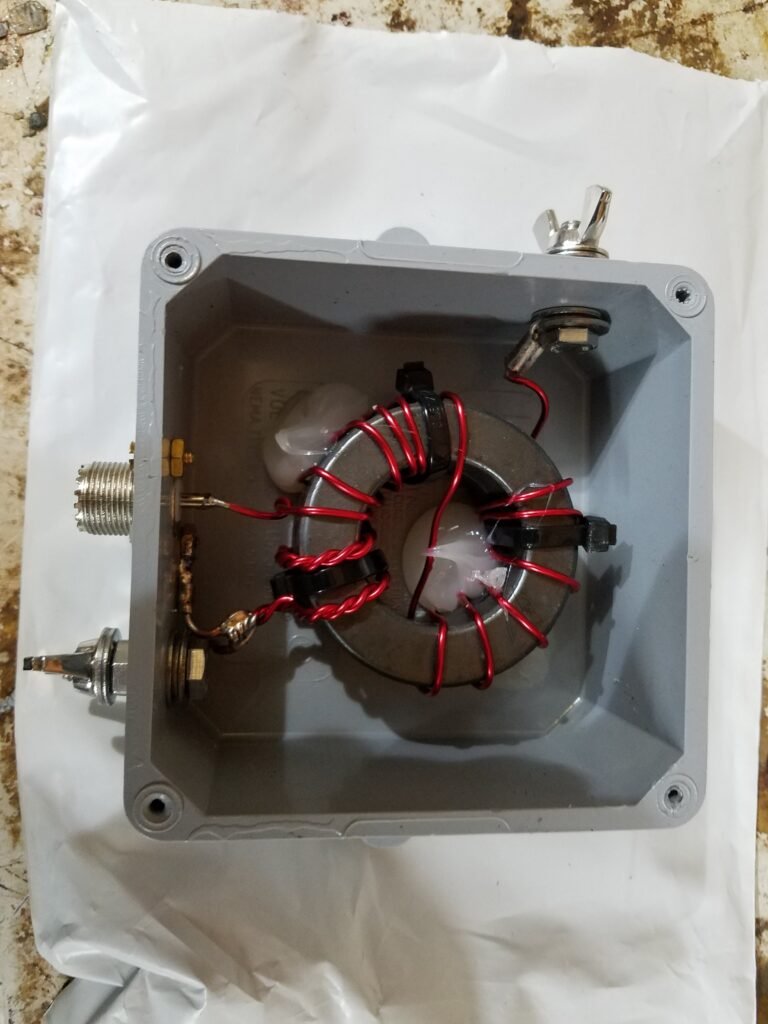This post shows the other types of baluns that wasn’t shown in the previous post about the same subject. Also introduces the unun.
It’s recommended that you read the post about the operation of baluns before continue.
Folded balun
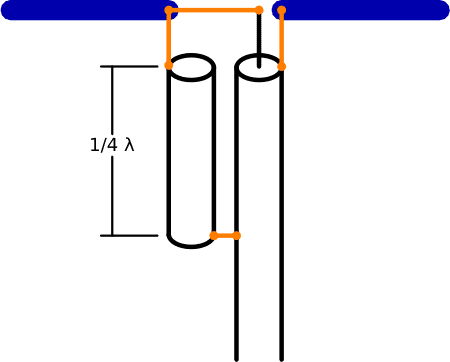
Also called a quarter-wavelength balun, due to the parallel conductor have one quarter wavelength of operation frequency. It’s connected to coaxial cable and one part of dipole antenna, as shown in the figure above. Serves to make connection between an unbalanced coaxial cable and a balanced dipole antenna.
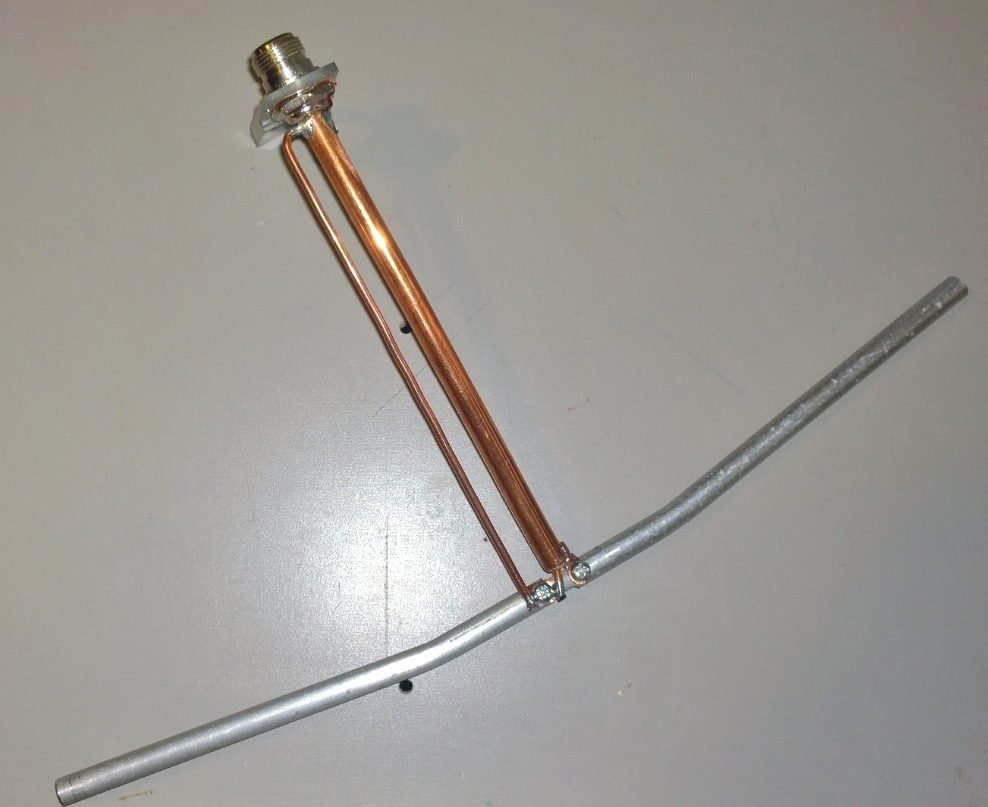
Coaxial balun
Are used pieces of coaxial cable to make impedance matching and each terminal on the output is linked to a cable end. This type have two settings: on 1:1 settings, 2 coaxial cable pieces connected to the unbalanced side, one whose length is 1/4 wavelength of applied signal and another that measures 3/4 wavelength.


Other settings is the 4:1, where the antenna’s output has 4 times input’s impedance of unbalanced coaxial cable. For that, it’s used a cable piece whose length is half of signal’s wavelength. This piece must be connected as shown in the figure below.
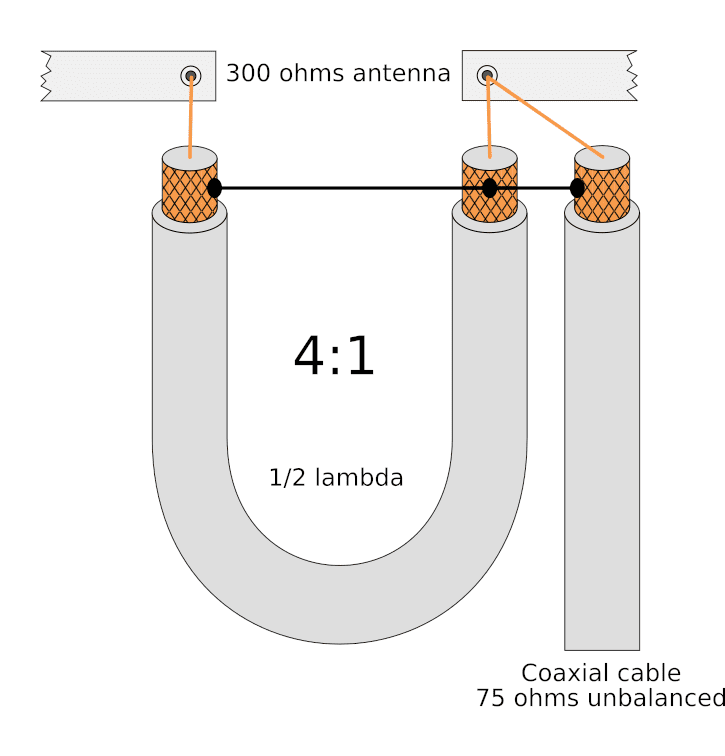
In both configurations, the unbalanced cable’s length can be arbitrary. Are used for antennas that operate in VHF and UHF frequencies, whose bands are 30 to 300 MHz and 300 MHz to 3 GHz, respectively.
Bazooka balun

A sleeve made of conductor material, must have a quarter wavelength (\lambda /4). This is linked to coaxial cable’s external mesh in the opposite side of antenna, in other words, it’s short-circuited.

What is common mode current?
When high frequency currents pass through coaxial cable, occurs the skin effect, that produces one more current that pass through external wall of metallic mesh, this is the common mode current.

When a coaxial cable is connected to a dipole antenna, the current on both sides of dipole aren’t equal and the antenna won’t work properly, because it’s irradiation will be distorted. In addition to the cable radiate radio waves.
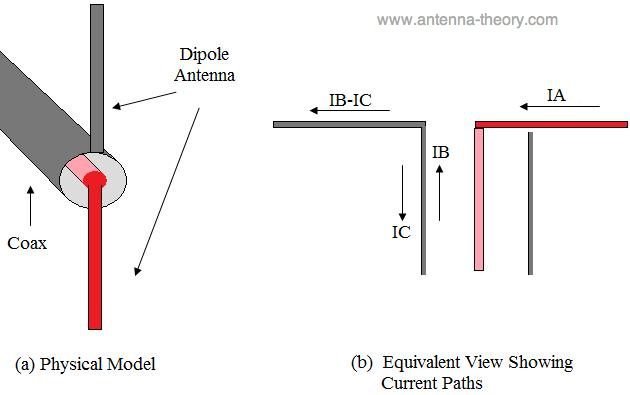
One side is short-circuited so that the another side has an infinite impedance, blocking the common mode current. Consequently, antenna becomes balanced. The folded balun uses the same principle.

Mathematical demonstration.
\large \hat{Z}_{IN}=Z_{C}\frac{\hat{Z}_{L}+jZ_{C}tan\beta L}{Z_{C}+j\hat{Z}_{L}tan\beta L}
- Z_{C} is conductor impedance.
- L is balun’s length.
- \beta is phase constant, whose value is \large \frac{2\pi }{\lambda }.
\large \hat{Z}_{IN}=Z_{C}\frac{jZ_{C}tan(\frac{2\pi }{\lambda }) (\frac{\lambda }{4})}{Z_{C}}=jZ_{C}tan(\frac{\pi }{2})=\infty
The unun
The name is the abbreviation of unbalanced-unbalanced, makes the impedance transformation between two unbalanced sides. It’s used to connect an antenna with unbalanced structure to a coaxial cable.
